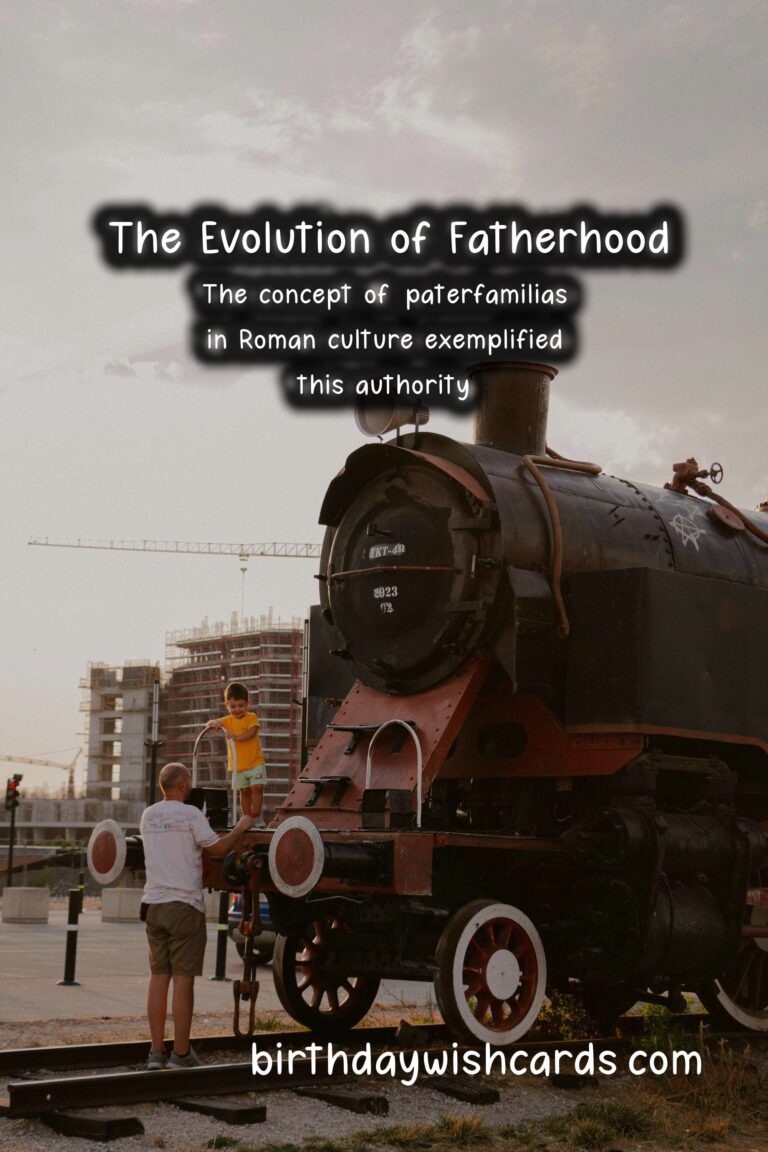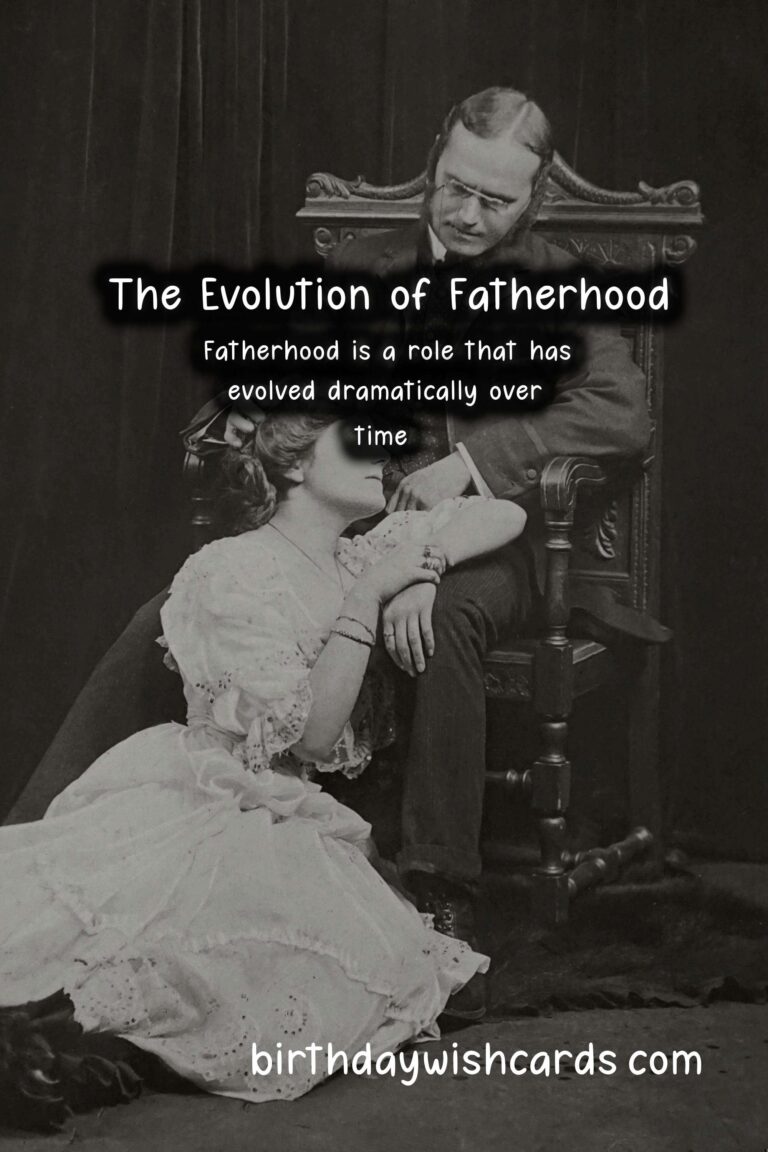
Fatherhood is a role that has evolved dramatically over time, reflecting changes in society, culture, and technology. This article explores the historical context of fatherhood, the changing perceptions of the father figure, and how these shifts have shaped the relationships between fathers and their children.
Ancient Concepts of Fatherhood
In ancient civilizations, the role of the father was predominantly viewed through the lens of authority and provision. In societies such as ancient Greece and Rome, fathers were seen as the heads of households and were responsible for the welfare of their families.
The concept of ‘paterfamilias’ in Roman culture exemplified this authority, where the father had legal control over all family members. This control extended to making critical decisions about the family’s socioeconomic status and education.
The Middle Ages and the Shift in Fatherhood
During the Middle Ages, the perception of fathers began to shift. Emphasis was placed on the role of the father not just as a provider but as a moral guide. Christian teachings began to influence family dynamics, highlighting the importance of love and affection in the parent-child relationship.
In this era, many fathers were involved in their children’s upbringing, teaching them skills necessary for survival and trade. This was particularly relevant in agrarian societies, where children worked alongside their parents.
The Renaissance and Enlightenment: Evolving Ideals
With the advent of the Renaissance, new ideas about individuality and education emerged. Fathers were now seen as educators and nurturers, inspiring a more emotional and supportive relationship with their children.
The Enlightenment further propelled this change. Thinkers like John Locke emphasized the role of the father as a teacher and moral instructor. This was a significant departure from the purely authoritarian model of fatherhood.
The Industrial Revolution: A New Era of Fatherhood
The Industrial Revolution marked a dramatic transformation in family dynamics. As families moved to urban areas for work, traditional roles began to shift once again. Fathers became wage earners, often spending long hours away from home.
During this period, the concept of ‘fatherhood’ began to evolve to include not just economic support but emotional involvement as well. The term ‘breadwinner’ was coined, representing a father’s role in providing financially for his family.
The 20th Century: The Emergence of the Modern Dad
The 20th century saw further evolution in the concept of fatherhood, particularly after World War II. The post-war era idealized the family unit, and fathers were encouraged to take an active role in family life.
Television and media began to depict fathers as nurturing figures, best exemplified by characters like Ward Cleaver from ‘Leave It to Beaver’ and Mike Brady from ‘The Brady Bunch’. These portrayals helped to establish a new standard for fatherhood that balanced authority with affection.
Fatherhood in the 21st Century
In recent years, the role of fathers has continued to change. The modern dad is now often seen as a co-parent, equally sharing responsibilities with mothers. This has been encouraged by societal shifts toward gender equality and more flexible work arrangements.
Statistics show that more fathers are taking paternity leave and becoming stay-at-home dads, reflecting a significant cultural shift. Additionally, fathers are more involved in their children’s education and extracurricular activities than ever before.
The Impact of Technology on Fatherhood
The rise of technology has significantly impacted fatherhood. Social media platforms now provide fathers an avenue to share experiences, join parenting groups, and find resources for parenting. This creates a sense of community and support among fathers.
Moreover, technology enables fathers to maintain connections with their children, even during long work hours or travel. Video calls and messaging apps have become essential tools for keeping the father-child bond strong.
Challenges Faced by Modern Fathers
Despite the progress made, modern fathers still face many challenges. Balancing work and family life remains a prominent issue, with many fathers struggling to find time to connect with their children.
Additionally, societal pressures and expectations around masculinity can lead to feelings of inadequacy. Many fathers report feeling stressed about meeting both professional and familial obligations.
Conclusion: Embracing the Future of Fatherhood
As we move forward, the concept of fatherhood will undoubtedly continue to evolve. By embracing more equitable parenting roles and incorporating emotional support into their parenting styles, fathers can foster stronger relationships with their children.
The history of fatherhood demonstrates that while the roles have changed, the core of what it means to be a father—love, support, and guidance—remains timeless and universal.
Fatherhood is a role that has evolved dramatically over time. The concept of ‘paterfamilias’ in Roman culture exemplified this authority.

